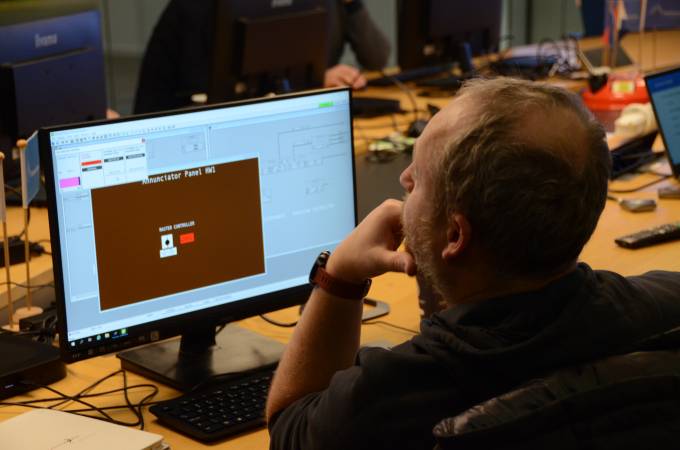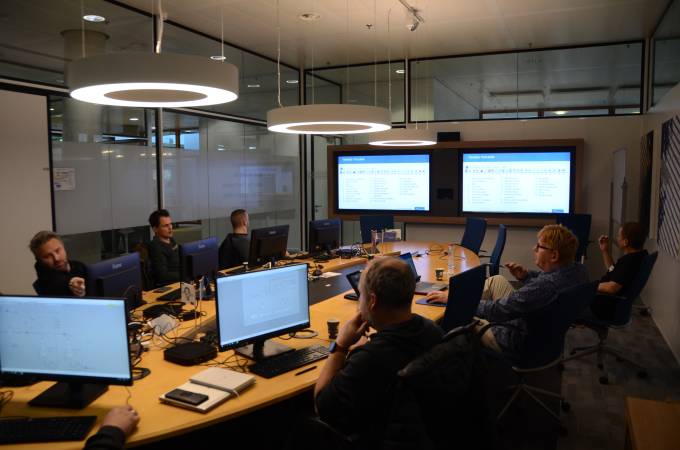Experiences with Operator Training Simulator at Nobian’s chlorine production plant

Stamicarbon is delivering another Operator Training Simulator (OTS) to Nobian, a leading European producer of chlorine with facilities in the Netherlands and Germany. Nobian produces chlorine for use by different companies in the region and has extensive experience using Stamicarbon’s digital product, being an OTS customer since 2001. This article will highlight Nobian’s experience with the OTS.
OTS evolution
After the execution of a successful pilot project, Stami Digital delivered an OTS for Nobian’s Membraan Elektrolyse Bedrijf (“Membrane Electrolysis Company”) chlorine production plant in 2008.
The customer had a direct-connect OTS application and a maintenance contract to keep the application up to date. In 2010 the OTS was revamped as the Distributed Control System (DCS) in the plant changed and the control system was added to the simulator, making it a full emulation OTS. Using the DCS database as an input for the control resulted in a simulator with more details in the control system, giving a better look-and-feel experience for trainees.
In 2014, the OTS was expanded by adding a caustic evaporation section. Then, in 2022 Stami Digital began work on an OTS application for the operator training on the plant’s Chlorine Caustic Unit (CCU) Steam System.
Glossary
- Direct-connect OTS – an application where the simulator’s dynamic model is connected to a copy of the actual Distributed Control System of the plant.
- Full emulation OTS – an application where the process and full control system are emulated within the OTS software.
- Disturbances – alterations applied to the process model, sensors or actuators.
- Interferences – interruptions or alterations of an ongoing session.
- Online malfunctions – alterations applied to sensors, actuators, lines and equipment.
Using the OTS for day-to-day operations
Nobian operators use the OTS to train their colleagues on the different aspects of the simulator to prepare them for controlling the plant independently. At first, the trainees would observe the operator in the control room to understand how the control system works. Once they know more about the control system, the trainees experiment on the simulator. The training involves different scenarios, such as daily operations, cases that often happen in the plant and cases that are rare. Those include scenarios like a complete startup, major interruptions and complete plant shutdown.
Sander Springvloet, an expert operator at Nobian, said the main benefit of the OTS is the possibility to simulate situations that don’t happen during normal operation and train how to recognize and prevent these situations. Employees work in shifts, so the chance of a specific operator being in the plant when something happens is small. Training on the OTS allows for simulating the situation, so everyone in the plant can benefit and learn from the experience.
A scenario trained often simulates the “40% action,” reducing plant capacity by 40% to prevent damage if something goes wrong. This action can be activated when the process temperature is too high, the pressure is too high or too low, or when chlorine is detected outside the plant, etc. For example, if, when operating the section for dechlorination, the vessels approach the high limit, the 40% action is activated, and the plant completely shuts down if the values continue to increase. “That’s one of the scenarios we train a lot because some people are a little scared to do something with the unit, that if they do a certain thing, the level will go up, and something big can happen. But it’s easier if they know how to control it from training on the OTS,” Mr. Springvloet said.

As a result, when these situations happen in real life, trainees are much quicker in addressing them because of the simulator training. Mr. Springvloet also added that each employee approaches training differently, even within the same scenario: “The solution is always the same, but there is a bit of difference. It’s best practice when you see 10 people do it mostly the same but always a little differently and pick out the best way; it’s always better for everyone.”
OTS training at Stamicarbon
Plant operators from Nobian’s production facility in Rotterdam, the Netherlands, visited Stamicarbon’s office last year for training on using the OTS.
The operators learned how to use Stami Digital’s software suite for the development of dynamic simulation models, emulated DCS functions and training scripts. Customers familiarized themselves with the applications they would use in the future to create and run various training scenarios in the OTS.

“The training was very good. I really liked the setting in which we did it. It was not just theoretical but very hands-on. We learned that within the program we could make different scenarios, which we know from real life, simulate them and train others on them, so it gave us a good base to build on,” said Alex Vonk, shift coordinator at Nobian and lead engineer for the CCU Steam System project.
The training was designed to give the customers the necessary knowledge and tools for creating and editing training scripts to enhance individual operator training, allowing the instructor to design training based on the training goals and the trainee’s experience level. Customers learned how to interact with other trainees, monitor their progress and simulate and test disturbances, interferences and online malfunctions.
Would you like to know more about using digitalization to take your plant to the next level? Listen to our podcast episode on this topic.
Enjoyed this story?
Every Monday, our subscribers get their hands on a digest of the most trending agriculture news. You can join them too!















Discussion0 comments